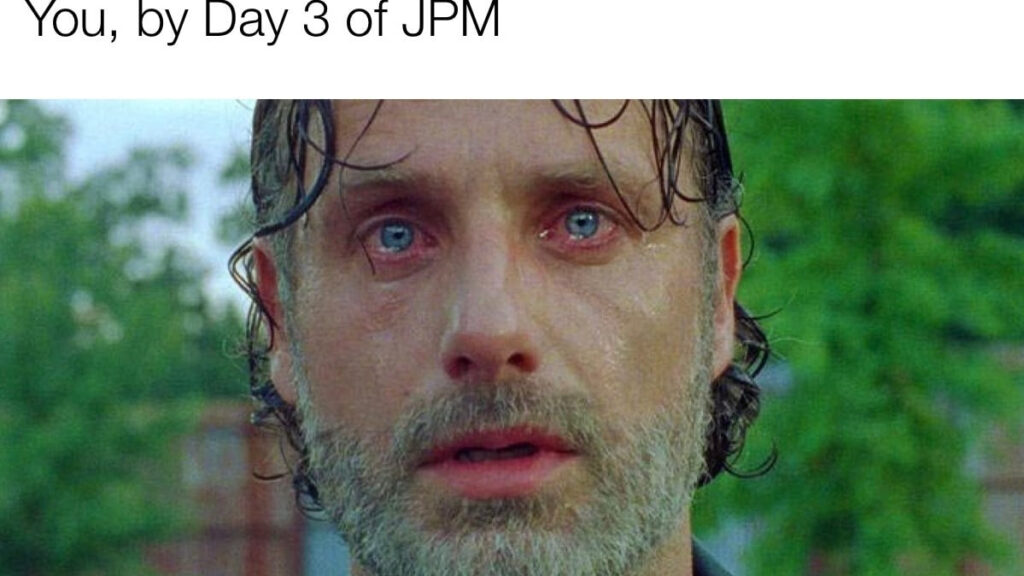“The lanyards” have landed! Apparently, that’s what the good folks of San Francisco call everyone who descends on the city for the J. P Morgan Healthcare Conference. One of our STAT colleagues was at a local bar last night and overheard a group of San Franciscans lamenting about all of the people in conference lanyards and Allbirds sneakers — or “Salesforce 1s,” as another bar patron called them — that were starting to fill the city.
Well, if we’re going to take over the city, let’s get some news out of it! Johnson & Johnson is . Merck is . And while it’s not a done deal yet, Novartis does appear to be circling around Cytokinetics, .
Oh, and Eric Tokat ! All in, Monday was a pretty satisfying day for M&A at JPM. The XBI biotech stock index closed up 5%. Speaking of Tokat, the Centerview Partners adviser — and biotech’s most prolific dealmaker — .
The next 12 months, he said, will be another strong year for acquisitions, driven by Big Pharma’s need to restock pipelines with medicines that can generate sales in the coming years. “M&A is being driven by pharma’s needs and the innovation that’s happening,” said Tokat. “The 2025 to 2030 time frame is very challenging for pharma because a lot of their drugs are losing patent protection and their internal pipelines are insufficient to achieve the growth they require, so they have to look externally.
” When the first $1 trillion chip maker comes to health care’s biggest meeting, people come to listen. So it was that the Nvidia presentation at J. P.
Morgan was not just full, nor merely standing room only. People poured out of the relatively small upstairs room and into the hallway such that it was impossible to hear the presentation. Undaunted, STAT’s Matthew Herper listened to the webcast on headphones while crammed against one of the room’s open doors.
The news? Nvidia is , and expanding its partnership with AI-focused biotech Recursion Pharmaceuticals. But also the company has a vision by which biology has hit the moment where it becomes digital and machine learning will speed up drug development as it has chip design. It’s tantalizing.
It’s also been said before. Even with all the sudden progress in digital AI, how do we know if that moment has finally arrived? It’s certainly not been the easiest few years for Sage Therapeutics, the neuroscience company that has been plugging away at introducing new depression treatments, with mixed results. The company’s latest move was to lay off 40% of its staff and part ways with its chief scientific officer last August.
Sage presents at the conference this afternoon, but in the meantime, its former executives are moving on. Former CEO Jeff Jonas and Al Robichaud, the former science chief, are to lead its neuroscience investments, they told STAT exclusively. Cure hasn’t disclosed what exactly it hopes to do in nervous system disorders, but it plans to reveal more later this year.
You may recall that Jonas had teamed up with investment giant CBC Group last year to develop a new biotech incubator. Well, he parted ways with that venture in September, saying only that “we had differing visions about incubation. ” Neuroscience has come back into favor in the drug industry, and it benefited substantially from biotech’s December bump.
Two leading neuroscience startups, Karuna Therapeutics and Cerevel Therapeutics, were acquired last month by Bristol Myers Squibb and AbbVie, respectively. Christopher Boerner, who has been the CEO of Bristol Myers Squibb for two months, earlier today with a clear plan to ease investors’ nerves. His basic message: The company has been through having big drugs go generic, and the sales it will lose this time will be manageable and will lead to another period of renewal.
What’s uncomfortable is that what investors really want is not a history lesson but clarity on whether Bristol can execute on using its huge but waning franchises to launch new products and build a renewed company. And although Bristol has increased the number of medicines approaching the market through both its own internal efforts and through deals, what investors want to see is some solid sales growth of the company’s recently launched medicines. For years, while CEO of Biomarin Pharmaceutical, Jean-Jacques Bienaimé spoke of the grand potential of the company’s hemophilia A gene therapy, of treating up to 5,000 patients per year while charging $2 to $3 million per dose — a recipe for $10 billion to $15 billion in revenue.
Biomarin’s new CEO is promising to talk less. Alexander Harding, freshly installed after a five-year tenure as chief of Genentech, told a J. P.
Morgan audience that the company would no longer make predictions about its gene therapy. The remarks came after the treatment, Roctavian, delayed for years, faced a disastrous launch in 2023. Harding disclosed in his remarks that the first U.
S. patient was only treated at the end of December. “It’s slower than anyone would have expected,” he said.
Although trial data show the one-time therapy dramatically reduces the risk of bleeding for years, it comes with a $2. 9 million price tag, is competing with other highly effective therapies, and many hoped. Harding said there was a “clear value proposition” but that launch would take time and the company wasn’t going to make promises.
“We’re going to let the results do the talking for it,” he said. “That’s what we’re going to focus on is the results rather than providing lots of expectations and forecasts on Roctavian. ” Instead, Harding focused mostly on Voxzogo, the company’s treatment for achondroplasia, a genetically driven form of dwarfism.
The company plans to push it into other indications marked by short stature as they seek to turn it into a blockbuster product. .
From: bostonglobe
URL: https://www.statnews.com/2024/01/08/jpm-2024-first-day-deals-readout-biotech-newsletter-biomarin-bristol/?utm_campaign=rss
